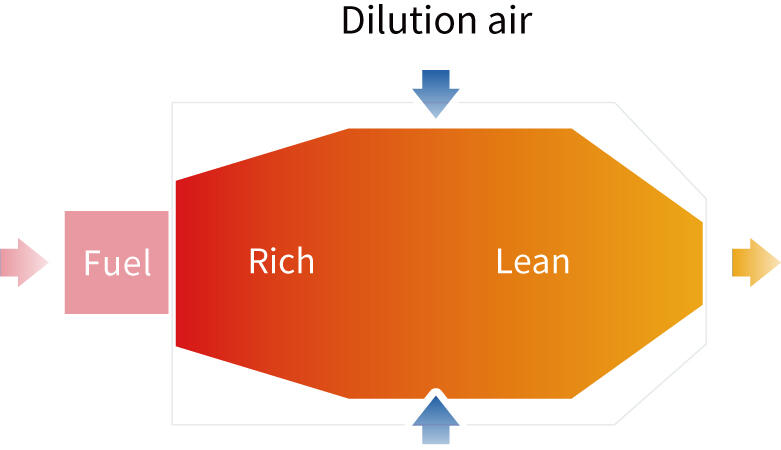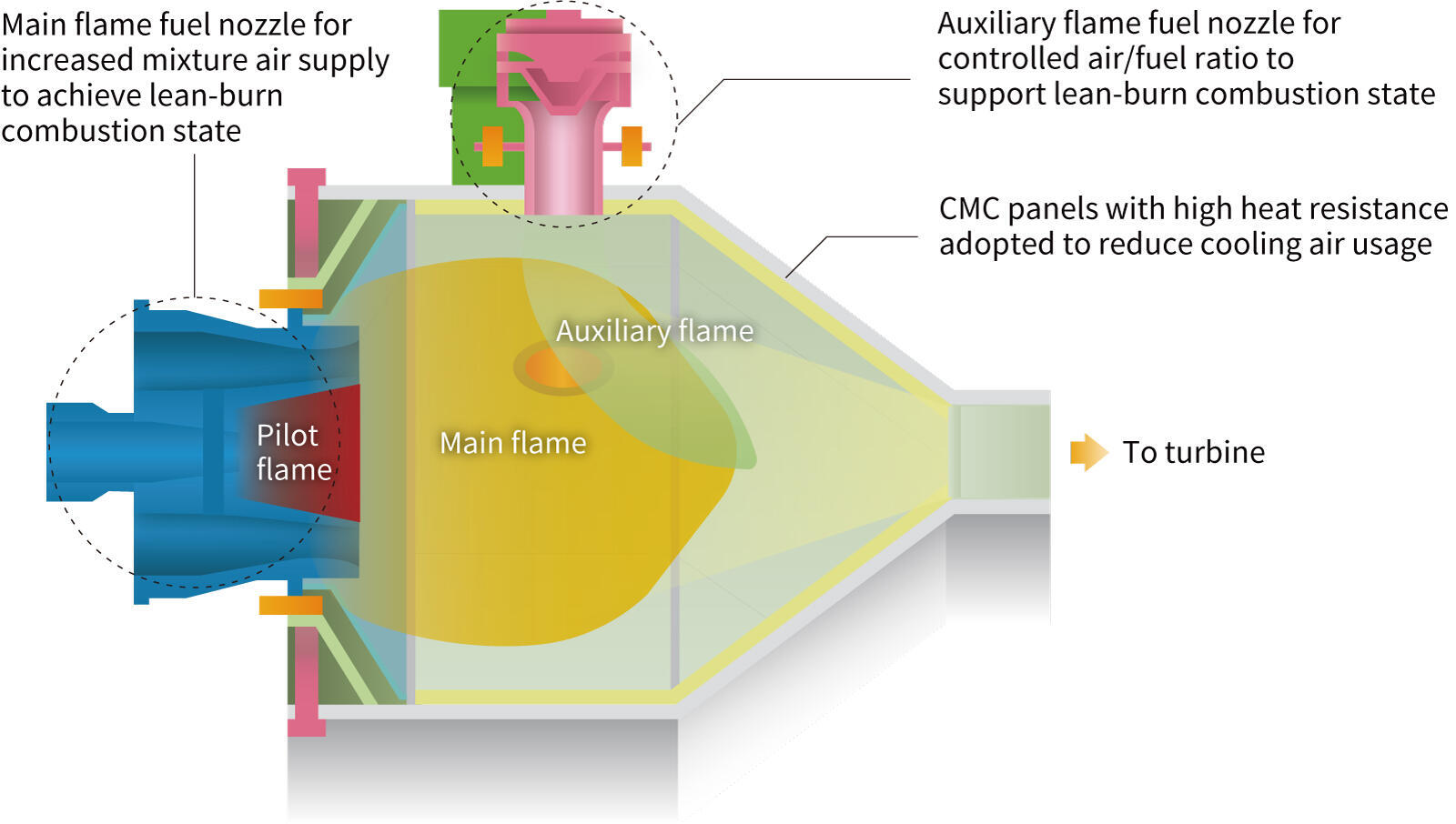Aeronautical Technology Directorate
Pursuing More Environmentally Friendly Aircraft with En-Core Project
Unprecedentedly Low NOx Emissions Engine
The Aeronautical Technology Directorate is promoting the Environmentally Compatible Core Engine Technology Research (En-Core) project, starting from 2019. This project aims to develop key technologies for an environmentally compatible core engine, and is pursuing two technology targets: "Ultra-low NOx lean premixed combustor" to reduce NOx emissions and "High-temperature high-efficiency turbine" to reduce CO2 emissions.
Recently, a first phase test was conducted for the new combustor development, which demonstrated unprecedentedly high performance of NOx emissions reduction, marking the world's lowest. The key to this achievement lies in the lean-burn method (Figure 2), the combustion method adopted to develop the new combustor system in place of the RQL (Rich-burn, Quick-quench, Lean-burn) method (Figure 1), a conventional commercialized technology enabling low NOx emissions. YAMANE Takashi, Project Manager, describes the related reasons, as below:


"Generally, NOx emissions increase when the flame temperature of burning fuel rises. Compared with the conventional RQL method, with which it is difficult to further reduce high-temperature regions, the lean-burn method allows overall constraint of high-temperature regions, resulting in a greater NOx emissions reduction. One major limitation of this method is combustion instability due to lean state of fuel. As a remedial measure, we plan to install pilot flames with rich fuel. In this situation, we are challenged by two requirements, specifically for minimizing the proportion of pilot flames and maximizing the ratio of air to be mixed with fuel. Overcoming these challenges is the key to achieving the target technology."
"The aircraft engine combustor is required to be operated stably and safely with low toxic gas emissions throughout the entire range of flight from starting and takeoff to landing," continues YAMANE.
"The project's goal is to make possible unprecedentedly high levels of environmental performance for the aircraft engine while satisfying the above requirements. Toward this goal, we are making persistent invention and improvement efforts. To ensure accurate verification testing of the combustor's gas emission performance, it needs to be conducted under conditions (pressure, temperature, etc.) equivalent to those for flying actual aircraft, which requires preparation of large-scale, complicated facilities and highly technical testing capabilities. For this purpose, the En-Core project draws on a wealth of technologies and knowledges that JAXA has accumulated over many years."
Over about two years since its launch, the En-Core project has progressed to see its way clear to achieving the goal, and is continuing with activities for design testing and improvement and assembling, aiming to carry out technology demonstration for the complete project scheduled for 2023.
In the RQL method, combustion starts stably in the fuel-rich state, which shifts to the lean-fuel state resulting from mixture air supply. Transition from the fuel-rich to lean-fuel state induces higher flame temperatures, a factor for generating NOx. In the lean-burn method, an overall lean-fuel state is created to reduce high-temperature regions, thereby diminishing NOx generation.

Profile

|
|
|---|
All the images are copyrighted ©JAXA unless otherwise noticed.
- Home>
- Global Activity>
- Public Relations>
- JAXA’s>
- JAXA's No.84>
- Pursuing More Environmentally Friendly Aircraft with En-Core Project Unprecedentedly Low NOx Emissions Engine